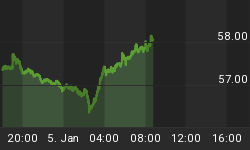The next internet could be powered by illumination, and it could be 10x the speed of today’s Wi-Fi, but there’s one big challenge that’s got commercial viability up against a wall.
Light Fidelity LED lightbulbs (Li-Fi) that could potentially replace Wi-Fi networks are being tested right now by Philips at the offices of a French real estate investment company.
The term Li-Fi was initially coined by University of Edinburgh Professor Harald Haas during a TED Talk in 2011 when he announced that light bulbs could act as wireless routers. One year later, he set up a company called pureLiFi.
But then he hit a snag: It was discovered that Chinese telecoms giant Huawei had already patented the technology in 2006, as Li-Wi—which has been under development by various researchers in the years since, and they’re hoping to replace Wi-Fi.
Another developer, an Estonian start-up called Velmenni, says it’s “chasing 10x the speed of current day data communication through illumination”.
Velmenni also recently tested Li-Fi commercially and found it superior to Wi-Fi in every way.
Whether Li-Fi or Li-Wi emerges triumphant in this race, some believe the idea itself seems set to render Wi-Fi as we know it obsolete, but others see too many challenges ahead.
So how does it work?
It works pretty much the same way that Wi-Fi works, but it leverages light waves instead of radio waves to transmit data.
An LED light bulb is a semiconducting light source—that means that the constant current of electricity supplied to an LED light bulb can be moved up and down at extremely high speeds that aren’t visible to the human eye. In other words, they can be dimmed and brightened more rapidly that the eye can detect. And it is this rapid light change that is converted by the “receiver” into an electrical signal. One step further, and this is converted back into a binary data stream…
And the future of the internet. Related: Is This The End Of Social Media?
Li-Fi provides broadband internet through lights, using LEDs to transmit a high-speed connection of up to 30 Mb per second through light waves.
It’s still in its early stages, but not as early as you might think.
With the current technology being tested, users would need to plug a USB into their devices in order to enable access to Li-Fi. But experts think that eventually, devices will have built-in Li-Fi.
And when we hit this point, the benefits are wild: It’s said to be much faster than our existing Wi-Fi tech, more energy efficient, and even potentially more secure.
Even better, it works where Wi-Fi doesn’t. For instance, it works where Wi-Fi radio frequencies often are blocked because they interfere with critical infrastructure such as medical equipment in hospitals.
Because Li-Fi is transmitted via lights, it can reach areas that are deep underground. Seamless hands-off technology ensures that the signal will remain constant as a connected device moves from one light to another.
But there is one very big challenge: What Li-Fi can’t do is penetrate walls, which remains one of the key challenges to its full implementation. Li-Fi needs open space, just like light does.
Velmenni's Jungru technology is a case in point. While it is already commercially viable and can transmit data at gigabit speed and in theory could hit 224 gigabytes per second, it’s a laboratory-grade set-up, which means that we’re not at the point where this is going to become mainstream.
Once it gets into the mainstream, where light pollution and a million other variables challenge it, we could see some more snags emerge, according to TechCrunch.
By Fred Dunkley for Safehaven.com
More Top Reads From Safehaven.com:
















